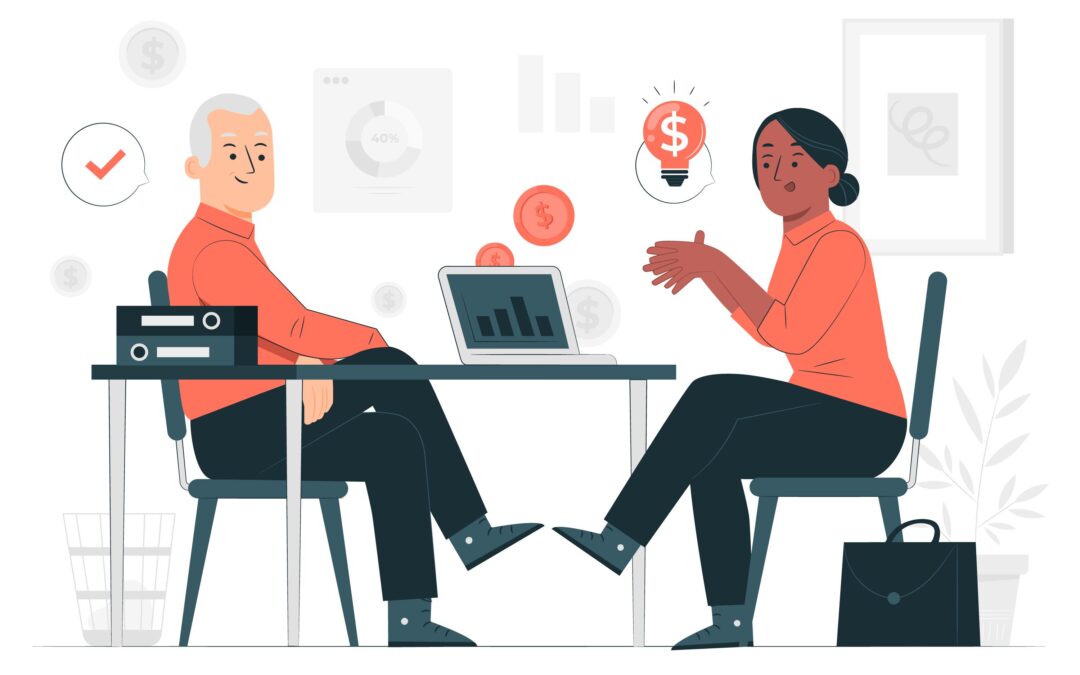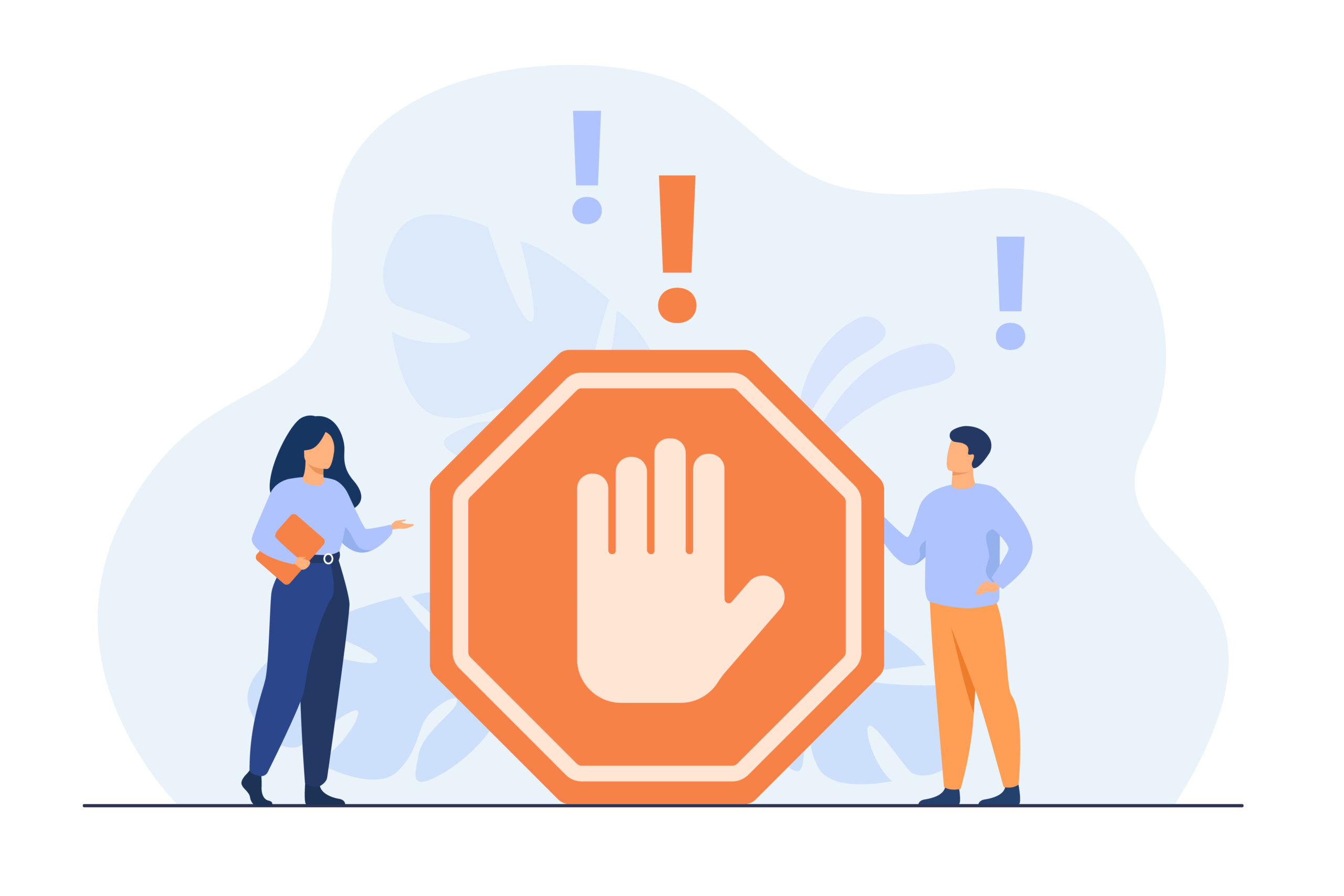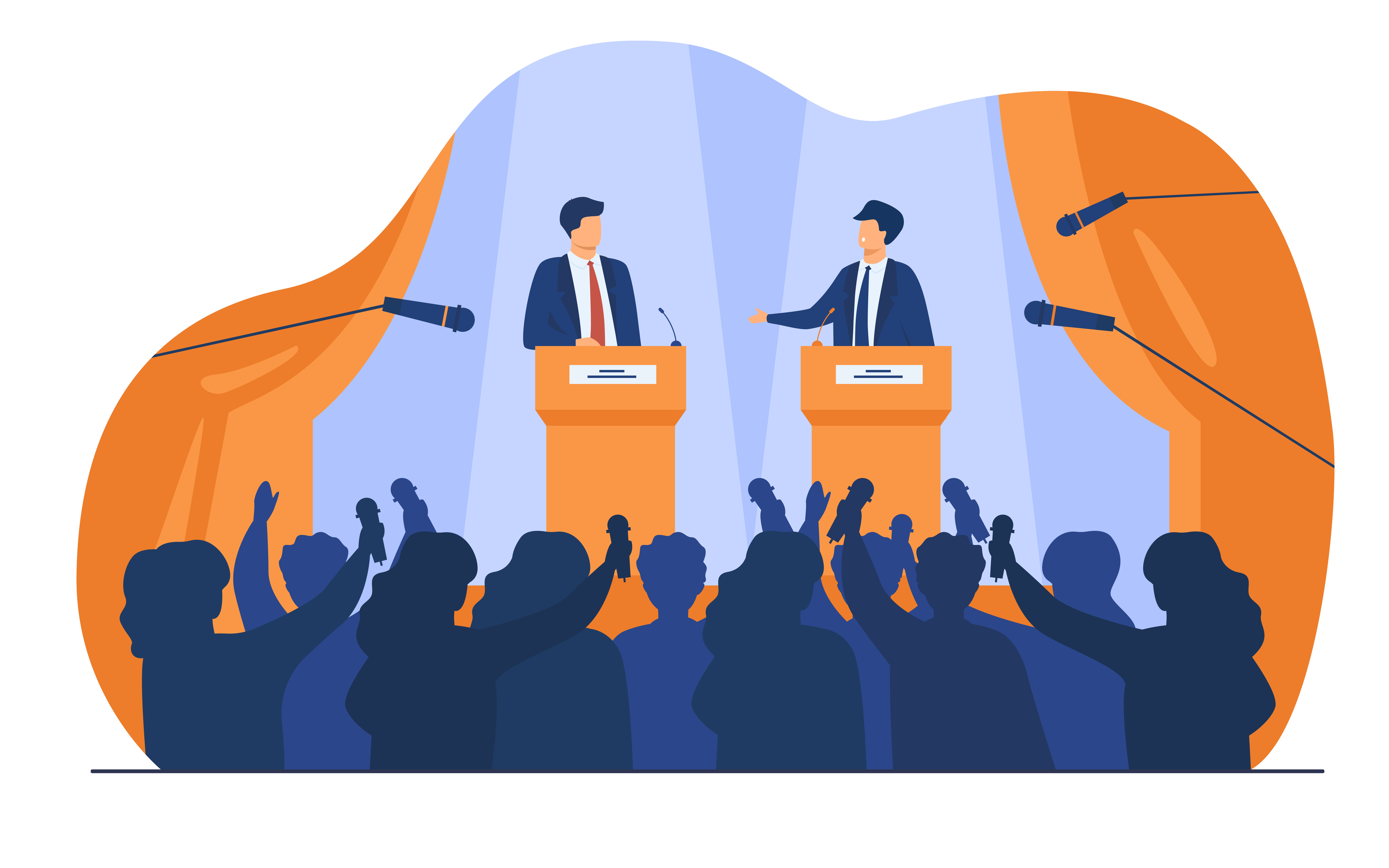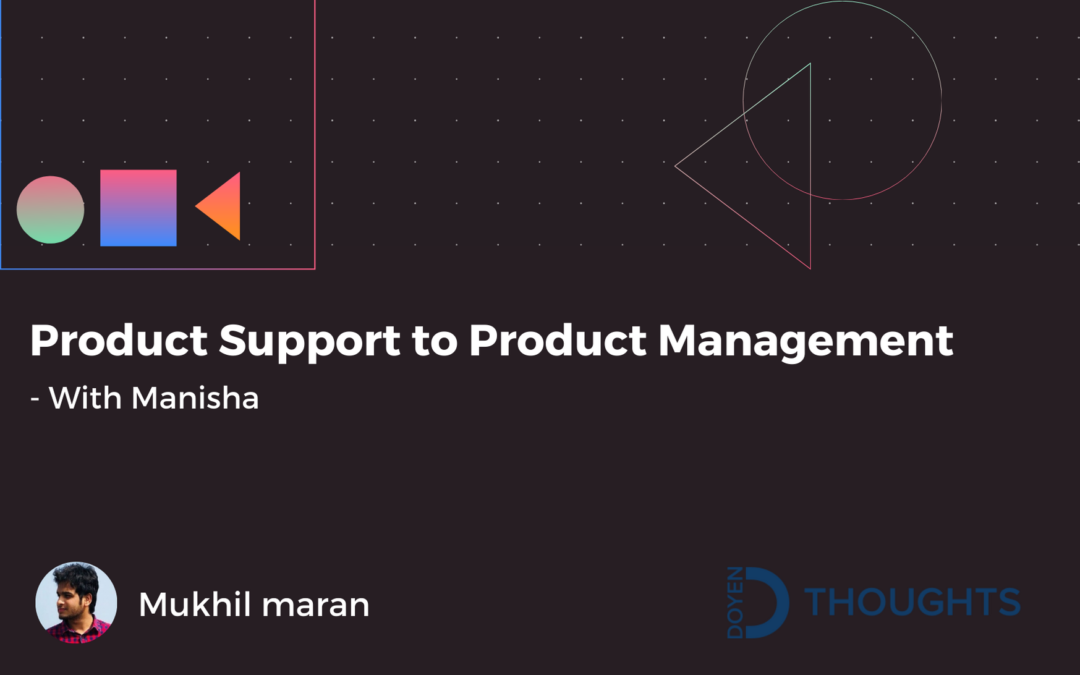
by Bharath | Mar 22, 2022 | Presales
Have you ever taken “NO” as a customer? It is painful, right? When you don’t get what you asked for, the conversation leaves a bitter taste even though the person offers an apology. However, you might still stick with the brand depending on the way you are being treated. Here in this post, I am sharing my experience on how to handle objections without hurting the sentiments of the customers
Loyal customers are valuable to any business. Most companies might not have what the customer have requested for. A simple plain “No” would turn off the customer excitement and may lead to disowning the brand. At the same time, accepting all requirements from the customers might deviate the brand for its vision. So, agents who handle the customers should be trained to handle the situation without committing false promises.
I have shared a few steps which I follow to ensure that customer leaves with a positive note after the discussion.
Acknowledge
When the customer comes with his requirement, be graceful and appreciate them for bringing it to your business notice. This simple gesture would build an initial connect and trust. But, let your response not sound scripted. Be genuine in your reply.
Empathize
You have to show some gratitude to the customer which is one of the most important things in the customer service and customer success field. When you use a sentence like “I do understand why you need the feature” that will show the customer that your company is not degrading or criticizing them for asking a certain feature.
Reiterate
This is something many of the agents failed to do so in the conversation. Reiterating the details and why it is important to the customer will give them a sense of relief. It guarantees that someone had not only listened but understood what has been requested by them.
Be Direct
Here come the difficult part. When the requested feature or item is not in store, be direct in informing that it is not available. False promises or excuse is a strict No-No. Be honest on why you are saying no to them. Only then the customers would understand the reason on why it is not available. Or else, they will get easily frustrated and a bad impression is stamped against your business.
Workaround
Workaround works. When you can’t help the customer as per their request you can offer them the alternate option recommended by your company. If that, works for the customer you can buy sometime until the actual feature is made available provided your org accepts it.
When the requirement doesn’t align with business vision, I have recommended a few other companies that can be of help to them.By doing so customers feel good that you are taking care of their needs. Maybe you lost one customer now but you gained a good or positive relationship with them. Also, you have avoided the negative review from them.
Notify Business
Requirement or features requested by customers should be documented in central repository. So, organization should set policies and provide tools that can help them collect the data. When the demand is high, there are possibility that it may become a part of the product soon or it might pave way for new opportunity. Let the customer knew that this has been updated in the system which gives some kind of assurance that business listens to customer needs.
Follow-through
Once you recommend the customer a workaround or referred them to another company, don’t wash-off your hands. Follow up with them once in a while about how things are work now. This would make the customers think that you still care more about them.So don’t think that you lost their business but focus on the relationship which would take boost the brand value.
Objection handling is an art. Presales engineer, Product consultant and customer service manager should master this art as they are the ones who come across such situations frequently. Package your “No” in such a way that the news is taken positively. And, don’t drop the ball as soon as conversation is over. Keep them in the loop. Stay in touch with them through social media like Facebook, LinkedIn, etc. so that you can share the content, blog post, articles that are useful to them. Build relationship and grow your brand.
More about objection handling in this link

by DoyenThoughts | Jan 12, 2022 | Customer Support
When I interacted with many support agents, I noticed that they casually throw around the terms customer experience and customer service interchangeably. Even a few business leaders have misunderstandings on the term customer experience. Both focus to delight the customer but they are not the same Know the difference to treat your customers well.
Customer experience refers to the complete journey of a customer from knowing your brand to post-purchase. Whereas, customer service is a key component of your overall experience. It refers to a single event where customers reach you for help.
What is customer service?
It is the support or advice that you offer to your customers when they approach you for any concerns or questions related to the product and services offered.
In simple, it is the customer support function of a business. It is an isolated event in the journey where the customer reaches the support desk when there is a concern.
With the rise of chatbots and exposure to self-service, businesses are able to deflect basic queries raised by customers and offer an immediate resolution. However, customers still prefer human interactions.
The business trains its support agents to go above and beyond to solve customer problems and provide the best solutions. This customer support could either make or break a relationship with the customer. So, consider this an integral part of customer experience.
What is customer experience?
Customer experience encompasses every single interaction of a user he/she has with a particular brand and how they perceive those interactions. There are many touchpoints between the customer and the brand before and after the consumer’s use of the product. A great CX(customer experience) provides a seamless and enjoyable journey from the start to throughout the engagement.
The key to CX is the way the journey is linked up without dropping the ball through the cracks.
Customer service and customer experience are both about delivering the best outcomes for the customer. And, that’s what matters.
74% of consumers are at least somewhat likely to buy based on experiences alone.
Emplifio
The Experience
I couldn’t resist talking about Apple. Have you wondered why Apple has such a huge customer base? Why are their customers are loyal than others? How this has helped in establishing their brand? The answer to this is “The Experience.”
Apple Experience doesn’t restrict itself to its products. Apple stores were designed to be the best possible Customer Experience anywhere across the world. The store associates master in human interaction with the approach below.
- A personalized approach for their customers
- Listen to understand the customer’s needs
- Present a solution that matches their need.
- Celebrate when you unwrap the gift(not product). That is the feel you get.
- Make them leave with a smile in their face.
The focus on product packages is another example of how much they value customers. The excitement when we unpack the product is priceless.
The feel when you leave the store makes you want to come back. Of course, the product is expensive. Who would mind the prices when the experience is premium. That is another reason, I have seen many save their bucks to lay their hand on the product.
The Service
Suppose you walk to the genius bar with a concern about the product, Apple genius is available at your service to help you sort the issue. They take an empathetic approach to ensure that concern is addressed even if it involves replacing the product. They are trained to ensure that the customers walk out satisfied.
When you have a careful look at it, Apple ensures that at every touchpoint customer gets the best experience and makes their overall journey a memory to live with.
Differences
From the Apple Store experience, I am sure you would have deduced the difference.
Customer experience focuses on the entire customer journey from brand awareness to getting in touch with business to purchase to post support. The number of touchpoints is high and multiple teams would be involved. Ensure the touchpoints are well linked. It is all about the relationship with the customer and can never be pinned down to particular interaction.
Customer services relate to a specific event where they reach only when there is a question or concern. However, this interaction should be a part of the overall experience. Adopt an
Customer experience is the way customers feel about your brand across the entire customer journey. Customer service is only one aspect of the entire customer experience. It might be tempting to think that your customer service team will take responsibility for creating great experiences, but it should be everybody’s job from product to support to sales and from marketing to senior leadership. .

by DoyenThoughts | Nov 18, 2021 | Presales
During my initial days as Presales, I was afraid to handle objections. Over a period, I saw this as an opportunity so started to embrace it. But, that’s not enough. You need to master this art of objection handling. Only then there is success.
The core approach was
- Acknowledge what the client has to say
- Decode the reason behind his objections
- Empathizing always works.
- You are not alone.
- Help overcome hurdle with customer success story
Acknowledge the client
When objections are raised the first thing we do is to Defend. By doing so, we would keep intercepting the client’s thoughts. And, this would end up looked upon as being rude. It will raise doubts in the mind of the prospect about you and the service/product you offer.
Listen to all his objections and make a note of the points. Let them know you will get back once they finish.
Decode the reasons.
Objections are raised for various reasons. By listening to his objections actively, you would have the time to think, analyze and find out the reason behind it. A few reason for objections
- Price – They would not want to spend on the product as a few take pride in saving money for the organization.
- Value for Money – Here, the price is not a concern. But, they wanted to ensure that they have got the best of value for the expenses.
- Competitors – They wanted to validate whether you are better from the competitors.
- Fear to adopt or upgrade – They are comfortable with whatever process or tools they have and fear that your service or product may disrupt it.
- Risk to my job – Yes you heard it right. Some fear that they may lose their job if whatever they chose might not work.
And, many more. Readers can share other objection reasons with me.
Empathize alway work
Empathize is a critical skill in customer service. Use it at this critical junction. You are already empathizing with the client by listening to his reasons. Now, repeat what you have understood and make sure you are all on the same page. Put yourself in their place and see how they may feel. Be sincere in your efforts.
You are not alone
Now, comes the action item. Tell your client they are not alone .When you say they are not alone, you let them know that this is something common. By doing so you bring them into a comfortable zone where they open a lot. Indirectly, you have established a social proof that this is common. Also, they know you and your company have already faced such problems and they can expect an answer. The trust is built.
Overcome hurdle
When it comes to product objections, tell them how your clients have found solutions to overcome these exact challenges. Propose the interesting features in your product that matches their needs or check whether a custom solution would work out for them. Try to justify, indirectly, how their features justify the cost. Share customer success stories where their ROI has been justified or how the product complemented the process.
Get prepared for more objections after our response. Try to anticipate those and cover it when you respond. Be genuine and sincere in your efforts. Don’t throw imaginary stats or stories to convince them. Share actual and relevant stories.
To summarize, dont be dismayed by objections.It is an opportunity to show the value of your product or service, and an opportunity to build relationship. Every objection is a positive sign as it your best chance to move and successfully closing the deal.
If you have missed my previous article on objection handling, here is the link

by DoyenThoughts | Nov 11, 2021 | Presales
When I started this article on objection handling never did I think it will become a two part series. To make it easier for reading I had to break it down into two. Thanks for understanding.
Objections are inevitable during demos or POC. And, objections are perceived as something difficult to handle. I have seen many Pre Sales or Sales Engineers getting nervous when they face one. But, most objections can be effectively handled by following a simple strategy. A shift in your mindset to acknowledge objections as a positive signal for a sale rather than a threat.
Why are objections raised?
Customer objections arise when they have concerns about the quality of the product, service offered by the business or knowledge of the sales engineer whom they interact with, they love your competitor and price.But, two other major factors stand tall among the rest – The risk involved in the switch and why disturb the existing setup.
What is objection handling?
It is a way to respond and change the mindset of the buyer by addressing their concerns. In the process of changing client mindset, don’t end up arguing that your product or service is the game changer or best among the competitors. That is not objection handling. This will end up proving the client that their stand has been right all along. That results in losing the rapport and sales.
Why is objection handling important?
If not negated in the early stage, the client would be holding onto his strong point. And, as a result you may lose the deal though they would be the right fit. And, in some cases, I have seen sales give a heavy discount to save the deal.
When you are unable to persuade them to choose your service or product,then go ahead and close the file. It looks like they might not be the right fit for you.
Embrace objection handling
Whenever I come across an objection it excites me. It is a positive signal for selling as they have been actively processing the information put across their table. They are much better than prospects who lean on their table, relax and never engage at all.
The tough ones are your opportunity to shine and gain your client’s trust and attention. They are the now who have been weighing the pros and cons. As a result they come up with these objections. The ones that are easy going are never the one we can win.
So, embrace those who object because they are the ones willing to adopt for change if they convinced right.
How to win client? Continue reading here

by rameshkumarramachandran | Sep 24, 2021 | Sales
Account Management can be linked to pareto principle. 80% of future business rule would come from 20% of your existing customer. So, focus on your existing clients to scale the business.
If you are small business or startup generating a few leads per day, than I recommend you to hire Account Managers and not Account Executives. Sounds weird? Let me explain why I recommended AM and not AE’s.
The Experience
Before I partnered with a small business, they hired an Account Executive who was able to play the Account Executive role with ease. The AE was was happy networking, generated leads, fostering customer relationship, proactively followed up for sales closure and achieved targets. After conversion, they moved on after handing it over project team.
During the implementation phase, there was no account ownership and the PM had to ensure that all was smooth. When something went wrong there was no accountability. As a result, client had a poor customer experience.
Even after the project was successfully handed over, the customer was never followed up to understand whether they were happy with our services or not. There was no relationship built with them to understand the usage of the product delivered. So, when the time for renewals came, customer turned their back. Hence, they leaked a lot of money in renewals and most importantly, their brand took dent resulting in poor reviews which in turn led to less lead count.
The Tweak
When I partnered with them, I noticed this flaw in their sales strategy. So, I recommended to make the Account executive play the role of Account Manager. And, that turned the tide. Instead of being transactional, the route they took was relational. Ideally, it is not good for one person to play both roles. Hence, one more person was hired to handle Account Management while the other person continued to be a Account Executive.
This approach helped improve the customer experience as well as customer retention. It didnt stop there as they got more organic leads via referrals. Also, they were able to publish testimonials which helped build their brand again.
For a business to be successful and profitable, focus on Account Management.
So, what is account management?
Account management focuses on nurturing client relationships to retain clients’ business, grow those opportunities and build brands. Account Managers accomplish these objectives by learning what their clients’ goals are and helping their clients achieve them.

by rameshkumarramachandran | Sep 11, 2021 | General
At times, I used to get into arguments which lead me nowhere. These arguments lead to conflict and cost me time and relationships. Noticing this behavior of mine, my colleague narrated the story of “The Donkey and the Tiger“.
The donkey told the tiger: ′′The grass is blue”.
The tiger replied: ′′No, the grass is green”.
The discussion became heated, and the two decided to submit the issue to the lion, King of the Jungle.
Before reaching the clearing in the forest where the lion was sitting on his throne, the donkey started braying: ′′Your Highness, is it true that grass is blue?”.
The lion replied: “True, the grass is blue”.
The donkey rushed forward and continued: ′′The tiger disagrees with me and contradicts me and annoys me please punish him”.
The king then declared: ′′The tiger will be punished with 5 years of silence”.
The donkey jumped for joy and went on his way, content and repeating: ′′The grass is blue”…
The tiger accepted his punishment, but he asked the lion: ′′Your Majesty, why have you punished me, after all, the grass is green?”
The lion replied: ′′In fact, the grass is green”.
The tiger asked: ′′So why do you punish me?”
The lion replied: ′′The punishment has nothing to do with the question of whether the grass is blue or green. The punishment is because you, a brave, intelligent creature, waste time arguing with a donkey, and then come and bother me with a silly question”.
From that point onwards, I try to avoid getting into conflict. And even when I get caught in one, I agree with the other person and will walk out politely.
It doesn’t mean that I have succumbed to a defeat. It is just that my/your time is more valuable than getting into unwanted arguments.
The book “How to win friends and influence people” was another eye-opener that helped me grow professionally and personally too.

by Ramya Gubbi Stanikas | Jul 11, 2021 | Customer Success
Congratulations, Sales Superstar! You’ve closed a SAAS deal.
What’s next?
You’ve put your best foot forward. Used every strategic technique you were aware of. And then it finally happens! You lock the deal. Hurray!!! You are basking in the warmth of your success.
Take a moment to celebrate but remember your work has only just begun.
Now that you have a new customer, your company has anywhere between a few days to few weeks to successfully onboard the new customer. If this customer uses your product in the right way and they’re engaged at every step along the way, you will be able to build a long-term relationship with them.
What’s the benefit of that? You might ask.
In a SAAS world, a happy and loyal customer is your biggest asset. Happy customers are more than willing to offer referrals. They might want to upgrade to a higher plan with more features or expand to more licenses or geographies. They are your huge drivers of recurring revenue for your business as your company grows.
What if
- They’re disappointed with your product?
- Feel cheated because what was promised during the pre-sales conversation couldn’t be delivered by your company?
- Do not realize the ROI or derive value from your product? Then they’re definitely at high risk of churn.
You not only might lose the customer but there is also a great possibility of them providing a negative review for your company. You could lose potential clients to these negative reviews.
Now that you know the importance of post-sales engagement and happy customers. Here are some important steps which will help you steer these unknown waters clearly.
The Sales Hand-Off
The Hand-Off could be to someone from Customer Success, Onboarding/Implementation, or Account Management Teams depending on your org structure. If possible get on a call with the internal POC who is responsible for handling the Onboarding and give them a brief about the customer. You could even prepare a standard Sales Hand-Off document and share it with the POC.
The kick-off meet/call should happen as soon as possible after the contract is signed. The Sales Rep should introduce the new customer to their POC to ensure a smooth transition.
Technical Configuration/Implementation
It is time to get technical after the kick-off call. It is your responsibility to communicate clearly the needs of the customer and what motivated them to buy your product? What problems are they trying to solve using your product?
This will help the configuration to be tailored directly to the customer’s business needs. This ensures that the customer will be getting the full functionality they’re expecting from your product.
Training
Once the product is configured, you have to ensure that the customer gets proper training. During the onboarding phase, it is important that the customers are learning about the product they purchased.
They should be going through all the necessary training from the beginning. If they know the product well, they will start using it immediately.
Go-live
Is your product up and running with all users? Has the training been successfully completed? The Go-live phase is very critical and your company has to ensure that there are no hiccups faced by any users.
Feedback collection
Feedback collection is important every step of the way but it is most crucial just after the go-live. A lot of users from the customer’s end will be using your product. You need to understand their experience and collect their feedback.
First value realization/Press-Release
What problem did your customer solve after using your product? What ROI did they derive? A press release of this success and happy collaboration can do marketing wonders to both your company and your customer.
Continuous Engagement
Once your customer has become a successful use of your product, it is important not to forget them. You should engage them constantly. Strive to build a real conversation that engages them, helps them achieve their goals. Make sure that they are happy with your product. You think getting married is difficult? Try staying married :). As Ross says, “And what is life without love?”. You need all the customer love you can get!
The article originally appeared in LinkedIN

by rameshkumarramachandran | Jun 28, 2021 | Sales
Whenever someone opens slideshows during events or online meetings, my mind goes “Oh no! Another presentation. I am going to be bored to death.”
I always believe slideshows should complement the speaker. However, the majority of the time it has become a distraction. So, I revisited a few presentation videos of Steve Jobs(I am a big fan of his presentations) to study what made his speech outstanding.
Here are a few points that can help prepare your slideshows
Plan
In your presentation, you should know what you intend to say. Your presentation should have a takeaway for your audience. So, visualize the journey and outline the presentation before trying to put together slides.
Many love story tellers. So, script your presentation to follow a screenplay with start, middle and climax. Your audience should enjoy the current slide and at the same time they should be eager to know what comes next.
Simplicity
Have very minimal words on your slide. When you display four bullet points, the attendees tend to read that first and wait for you to complete what have you to say.
So, make sure to display one simple title or word in your slide. The audience should know what you are conveying at that moment. The slide should help the flow of information to your attendees.
Avoid Paragraphs
This is a big no-no. People have come to listen to what you have to say. Not, to read the slides. Save the notes for yourself and not to be displayed on the screen,. Many software have notes to be displayed only to the presenter.
Simple facts or Big graphics with minimal display is what will be preferred.
Design
Pay attention to the design of the slides. Avoid dressing up your presentation with flashy themes and fonts. As mentioned earlier, stick to simple design.
Things to focus on design are fonts, images, alignment, colors and background.
Remember slides are part of the presentation and not the main part. The focus should be on you and the content. They have come to listen to you and gain something at the end.
The aim of your slideshows should be to support your statements not steal the center of attention.

by rameshkumarramachandran | Jun 15, 2021 | Sales
A prospect connects with you and shows tremendous interest in your services. You had a great conversation and all sounds positive. You are excited about this deal.
After a couple of days, the prospect stops answering your call. They don’t return your voicemail. They read your WhatsApp messages but don’t reply. Your email never gets a response.
The ultra responsive prospect goes silent on you.
I have been in this situation many times. Have you been? I am sure you would have been to.
Since sales was new to me I started my investigation on why they ghosted me and what could have I done to fix this.
Let’s start with the Why?
Usually, most of the sales assume it is something they had done wrong. That is not the case all the time. There are a few factors for prospect ghosting you and I have listed them based on my experience in sales.
The estimate
The instinct says they are the one with whom you are going to do the handshake. So, the estimate is sent after which there is silence.
When the estimate is way over the budget, there is no obligation for them to respond back. And, they believe it won’t be fruitful even after the negotiation. So, in their interest on time, they avoid connecting with you.
Other reasons are they have already evaluated and are ready to choose another product. They reach you so that they can show it to their management. Once they got it they are no longer interested to continue with you.
2. Timeline
All of a sudden the project is not their immediate priority. Something came critical or business has some other plan for the current year. Hence, it got pushed
In a few cases, the prospect knows that the project may kickstart late. However, they want to do the intel so that there is no last-minute rush in making decisions. In simple terms, they have made their decision and they know their timeline.
3. Requirement mismatch
Yes, we do the discovery and qualification. It may sound all glossy and fine. However, when the discussion deep dives you should start listening to understand the bigger picture and the goal. When the requirement is not well understood, the solution provided is a mediocre one.
Sometimes, when the behavior of sales is Know it all, the chances are the prospect never shares the requirement.
4. Trust
The talk with your prospect would have been great. However, prospects do business with you only when they know you, they like you, and most importantly trust you.
The prospect should have the connection that you are the one for them. It is not just the price. It is about the customer service, convenience, reputation, culture and values of your organization.
It is important sales realize that a prospect’s silence doesn’t reflect the sales style. For some reason, the prospect interest in our service has faded and most of the time it is internal. However, if this happens frequently, take some time to revisit your visit closed lost accounts and figure out ways to improve your skills.
Now,you know why your prospect goes silent. Its time to take action. In my next blog, I will share the efforts I had to taken to identify the motive of the prospect and kept them talking or gave me the reason on why they didn’t pick us.

by Mukhil Maran | May 16, 2021 | Technical
Manisha Bachpai is a Product Management Associate at Zoho. She started her career as a Customer support person, tailed slowly into Product Consulting and now she’s been into Product Management for around four months.
In this blog, she shares her beginnings, the influence of a mentor in her career, and much more.
We thought we could get a fresh chat as the transition is still fresh. Hope you too will find it refreshing.
1) We know you started your career as a product support specialist. How did it happen? Was it something you picked or came into your hands?
A product support specialist was something that I was unaware of. Even now, there is no proper awareness about this role, especially in the colleges. Anyone who is from a product-based company will be well versed in the roles and responsibilities of this domain. But, to the outer world, I personally feel that when people hear about support roles the first thing that hits their mind is a BPO.
So, immediately after college, I was left with zero options and had to take up this domain. This is something that came to me and after being a part of it, I understood a lot about this role. At times, we ourselves will not know what we are capable of and in that case, it is always better to try out whatever comes to us, work on that consistently for a few days and then decide if that is something we can stick with. I stress ‘work on that consistently for a few days as not everything will look like a piece of cake in the initial attempt.
After giving multiple attempts, if it’s something that doesn’t seek our attention, we can look for an alternative. This is what my mentor taught me.
In my case, customer support just came to me and I began to enjoy it over experience. I struggled a lot, initially. But, I went with the flow and did the groundwork to get the hang of it.
2) Mmm. Sounds approaching. So, what’s the most wanted quality that a product support person should have?
The most important quality is patience. Showing empathy is equally significant. But to me, communication skills are also equally important. By communication skills, I don’t mean that the person should have an excellent command of the language.
Communication skill is the ability to deliver information precisely to the other person be it internal or external stakeholders.
3) You were then into Product Consulting, right? How’s it? What’s the difference?
Product Consulting was also a part of my work life. I did not do the transition as such. It is a bundle package that serves various business requirements. It all started with my keen interest to know the domain and basic functionality of all the applications in that bundle.
I enjoyed handling consulting cases, as business and customer requirements helped me explore various domains and day-to-day scenarios.
However, here I did not find a very big difference between product support and product consultant. One such difference might be that in product support you need to have in-depth knowledge of the application you deal with, whereas in product consultancy, you will be pitching in for other products based on the requirement. So, cross-selling will be a part of product consultancy, not of product support.
4) And finally, what caused the interest to take up a product management role?
A couple of years back, I didn’t even know that there is something called Product Management. During my journey as a Product support specialist, I enjoyed exploring the product. Whenever I came across the customer’s pain points, I would put myself in the customer’s place and think of a solution. With this, I realized that I have eventually gone into the problem-solving mode.
So each time when a customer encountered such a usability issue, I would reach out to the product team with the issue and a few suggestions to solve it. I was lucky to have a team who took my recommendations and released them as a feature.
When I got a chance to take up this role, without any hesitation I decided to give it a try. Here I did not choose to be a part of the Product Management team by just going with the buzzword ‘Product Management’. I visioned my journey in this role. That gave me the confidence to take this up.
Luckily this worked for me. I’m not sure if this is something that will work for everyone.
5) Got it. During your stint as a Product Consultant was there any instances that motivated you to take this role?
Being in the customer-facing role, during the initial days, such a thought never stuck in my mind. Over time, I felt I’m more of a product person. When I got enough confidence, I got the urge to switch.
6) Great to hear that. How they helped you realize the same?
To me, the customer-facing role allowed me to explore the domain/product as much as I could. As mentioned earlier, I had a keen interest to propose solutions to all the unhandled issues and customer requests.
Thereby, my confidence boosted up considering the responses I received from the product team and I decided to make a switch.
7) To become a product manager or to be on a product management side, do you think, you should have technical knowledge?
A person in the product team should definitely have technical knowledge. I would say this is a myth. But it doesn’t mean that you should not have the basic technical knowledge. If a person has the technical knowledge, that will act as an add-on, compared to the ones who don’t have technical knowledge.
Here, in-depth technical knowledge is not asked for at the initial stage (this varies from team to team/company to company based on the product’s nature). But over time, I feel that (basic technical knowledge) is something a person will learn. This basic knowledge will eventually come while conversing with the engineering team and to understand the technical difficulties from scratch, it’s up to the product person to invest some time and effort to comprehend the root cause.
So it is totally fine if you do not have in-depth technical knowledge in the initial days. But one should have an open mindset to learn and understand how things work from the engineering perspective.
8) Learning is important. You’re there, Alright. So, how’s the role? What are the responsibilities you have now?
People say right, that if you like what you work, your work life will become your life’s work. I see myself in such a situation to an extent. It’s not as though I did not like the customer-facing role. But this is something I’m enjoying more compared to my previous role.
Every day is new learning, and I start my day with a mindset that I have a lot to learn. This mindset helps me explore a lot. With respect to responsibilities, it was more about knowing the need for a particular feature, analyze the cases and possibility and brainstorm with teams.
It involves a lot of team coordination with all the internal stakeholders.
9) Give us a sneak peek of your day as a product management associate?
There is actually no specific schedule for each day at work. To start with, I check the customer support requests, emails, and a few public forums to know what’s going around.
After that, each day depends on the work. Based on the features I have to work on, I come up with ideas after doing the initial groundwork.
The ideas were discussed with various teams based on which wireframes were built and enhancements were suggested. Sometimes we uncovered a few cases I would have missed.
So each discussion is like a brainstorming session with the internal stakeholders where we ensure to cover all the cases and then move them to deployment.
10) What are the tools you use every day? We had asked Sanjeev about this and he told us about some tools. Would love to hear from you as well!
Apart from the products I work on, to come up with basic wireframes, I use Figma. I found this tool very helpful.
11. Alright. Final one before we disperse, who was your inspiration to pick up this career?
My mentor motivated me a lot to get this. Thanks to Karthik Seshadri for guiding me in the right direction to take my career to this phase as per my interest.
A year back, he suggested me to pick up some scenario and come up with a solution in the form of an application wireframe. He recommended building something ground up keeping the customer’s perspective in mind. In simple, get on the field and get your hands dirty.
I guess this happens to a few people where they won’t be able to figure out the talent/skills they are good at. But a friend or a mentor will guess things quickly. I was lucky to have a mentor who identified where I will fit in.














